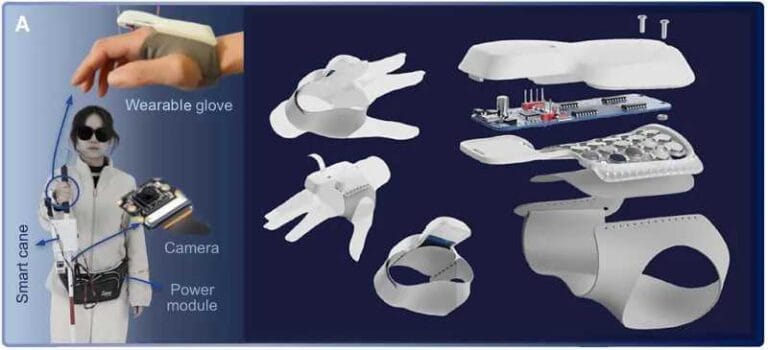Cyborg jellyfish in autonomous ocean exploration.

Earth’s oceans are—like space—a largely unexplored frontier. Relatively few humans have explored either site, using specialized life support equipment.
Unlike space, however, the oceans also have other beings that can explore them: jellyfish. They can go underwater where humans could never go. This makes them interesting candidates for autonomous ocean exploration.
Jahn Dabiri, a researcher at Caltech, is modifying these creatures to create biohybrid robotic jellyfish. These cyborg jellyfish do what they have been doing since time immemorial: swim, eat, sting and reproduce. But with a few improvements — including a small electronics package and a prosthetic hat — these little guys now have enhanced swimming capabilities.
The idea is to use cyborg jellyfish as data-collecting robots. They will swim in the oceans to collect information about temperatures, oxygen levels and salinity. Climate change affects all of these factors. This is important as we seek to understand how the buildup of carbon dioxide can affect the oceans.
“It is well known that the ocean is critical in determining our present and future climate on land, and yet, we still know surprisingly little about the ocean, especially far from the surface,” said Dabiri. “Our goal is to finally move that needle by taking an unconventional approach inspired by one of the few animals already successfully exploring the entire ocean.”
Recruiting jellyfish to solve engineering challenges
It may seem a little strange to recruit jellyfish to collect scientific data, but it’s not a new idea. These creatures inspired Dabiri to try to create a mechanical robot that could swim like a jellyfish. The idea worked, more or less. But the robot never swam as well as the real thing. So eventually, Dabiri decided to, essentially, recruit live jellyfish for additional experiments.
Dabiri and his colleagues first implanted electronic pacemakers in jellyfish to control their swimming speeds. When this worked, they added an additional piece to the jellyfish called the “forebody.” It looks like a small hat that sits on the jellyfish’s body. The team had to make some adjustments to adapt it. Eventually, they developed a model that works with sensors and other electronics.
“Just like the tip of an arrow, we designed 3D-printed forebodies to simplify the jellyfish robot’s bell, reduce drag and increase swimming performance,” said team member Simon Anuszczyk. “At the same time, we experimented with 3D printing until we were able to carefully balance the buoyancy and keep the jellyfish swimming vertically.”
How well did the cyborg jellyfish work?
After much experimentation, the team was ready to test their cyborg partners. They built a three-story aquarium at Caltech for testing. Why so big? “In the ocean, the round trip from the surface to several thousand meters takes a jellyfish a few days, so we wanted to develop a facility to study this process in the laboratory,” said Dabiri. “Our vertical tank allows animals to swim against a flowing vertical current, like a treadmill for swimmers. We hope that the unique scale of the facility – likely the first vertical water treadmill of its kind – will be useful for a variety of other basic and applied research questions.”

The results are interesting. Tests have shown that a cyborg jellyfish carrying an instrument swims up to 4.5 times faster than a “naked” one. Furthermore, they are hardy creatures who don’t seem to mind work.
“Jellyfish are the original explorers of the ocean, reaching its deepest corners and thriving equally well in tropical or polar waters,” says Dabiri. “Because they do not have a brain or the ability to feel pain, we were able to collaborate with bioethicists to develop this biohybrid robotic application in an ethically principled way.”
The cost of a cyborg jellyfish is quite cheap compared to highly expensive ocean instruments. The total expense is about US$20 per jellyfish, according to Dabiri. A research vessel with similar capabilities can cost more than $50,000. Obviously, the jellyfish were only tested in a relatively shallow area. In order for jellyfish to be sent to greater depths, there is more work to be done on their instrument packages.
“We still need to design the sensor package to withstand the same crushing pressures, but this device is smaller than a softball, which makes it much easier to design than a full underwater vehicle operating at these depths,” said Dabiri. . “I’m really excited to see what we can learn simply by observing these parts of the ocean for the first time.”
Advertisement - Continue Reading Below
Cyborg jellyfish in space?
Dabiri’s work does not cover any space applications. However, reading about these cyborgs makes one think about using similar technologies on other worlds. In fact, we can’t send cyborg jellyfish to Europe.
But perhaps instrument designers can take inspiration from their improved skills to create advanced swimmers to navigate the salty oceans of this distant moon. Who knows what they might find – and it’s all thanks to some jellyfish research partners right here on Earth.
This article is republished from Universe Today. Read the original article.






